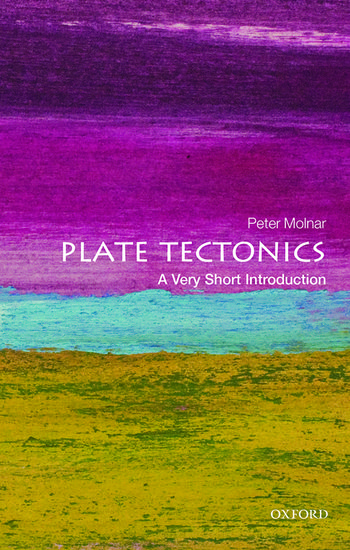Home >
A Very Short Introduction >
Plate Tectonics (Science)
A Very Short Introduction | Science
Plate Tectonics
ISBN: 9780198728269
Series: A Very Short Introduction
Plate Tectonics (Science)
A Very Short Introduction Plate Tectonics (Science) Media > Books > Non-Fiction > Education Books Expect Delays of Up to 4 Weeks| Order Below |
ISBN
9780198728269 (10-digit ISBN: 0198728263)
- Description
- Key Features
- Series Description
- Table of Contents
- A succinct and authoritative account of the nature and mechanisms of plate tectonics
- Explains how data on plate tectonics is obtained
- Explores the evolution of the concept of continental drift and its impact on our understanding of the world
The 1960s revealed a new and revolutionary idea in geological thought: that the continents drift with respect to one another. After having been dismissed for decades as absurd, the concept gradually became part of geology's basic principles. We now know that the Earth's crust and upper mantle consist of a small number of rigid plates that move, and there are significant boundaries between pairs of plates, usually known as earthquake belts.
Plate tectonics now explains much of the structure and phenomena we see today: how oceans form, widen, and disappear; why earthquakes and volcanoes are found in distinct zones which follow plate boundaries; how the great mountain ranges of the world were built. The impact of plate tectonics is studied closely as these processes continue: the Himalaya continues to grow, the Atlantic is widening, and new oceans are forming. In this Very Short Introduction Peter Molnar provides a succinct and authoritative account of the nature and mechanisms of plate tectonics and its impact on our understanding of Earth.
Oxford's Very Short Introductions series offers concise and original introductions to a wide range of subjects--from Islam to Sociology, Politics to Classics, Literary Theory to History, and Archaeology to the Bible.
Not simply a textbook of definitions, each volume in this series provides trenchant and provocative--yet always balanced and complete--discussions of the central issues in a given discipline or field. Every Very Short Introduction gives a readable evolution of the subject in question, demonstrating how the subject has developed and how it has influenced society. Eventually, the series will encompass every major academic discipline, offering all students an accessible and abundant reference library.
Whatever the area of study that one deems important or appealing, whatever the topic that fascinates the general reader, the Very Short Introductions series has a handy and affordable guide that will likely prove indispensable.
Please note: As this series is not ELT material, these titles are not subject to discount.
1: The basic idea
2: Seafloor spreading and magnetic anomalies
3: Fracture zones and transform faults
4: Subduction of oceanic lithosphere
5: Rigid plates of lithosphere
6: Tectonics of continents
7: Tectonics of continents
Further reading
Index
The 1960s revealed a new and revolutionary idea in geological thought: that the continents drift with respect to one another. After having been dismissed for decades as absurd, the concept gradually became part of geology's basic principles. We now know that the Earth's crust and upper mantle consist of a small number of rigid plates that move, and there are significant boundaries between pairs of plates, usually known as earthquake belts.
Plate tectonics now explains much of the structure and phenomena we see today: how oceans form, widen, and disappear; why earthquakes and volcanoes are found in distinct zones which follow plate boundaries; how the great mountain ranges of the world were built. The impact of plate tectonics is studied closely as these processes continue: the Himalaya continues to grow, the Atlantic is widening, and new oceans are forming. In this Very Short Introduction Peter Molnar provides a succinct and authoritative account of the nature and mechanisms of plate tectonics and its impact on our understanding of Earth.
Key Features
- A succinct and authoritative account of the nature and mechanisms of plate tectonics
- Explains how data on plate tectonics is obtained
- Explores the evolution of the concept of continental drift and its impact on our understanding of the world
Series Description
Oxford's Very Short Introductions series offers concise and original introductions to a wide range of subjects--from Islam to Sociology, Politics to Classics, Literary Theory to History, and Archaeology to the Bible.
Not simply a textbook of definitions, each volume in this series provides trenchant and provocative--yet always balanced and complete--discussions of the central issues in a given discipline or field. Every Very Short Introduction gives a readable evolution of the subject in question, demonstrating how the subject has developed and how it has influenced society. Eventually, the series will encompass every major academic discipline, offering all students an accessible and abundant reference library.
Whatever the area of study that one deems important or appealing, whatever the topic that fascinates the general reader, the Very Short Introductions series has a handy and affordable guide that will likely prove indispensable.
Please note: As this series is not ELT material, these titles are not subject to discount.
EASY ORDER FORM
PRICES LISTED INCLUDE CONSUMPTION TAX
Price Before Tax:
¥1,790


